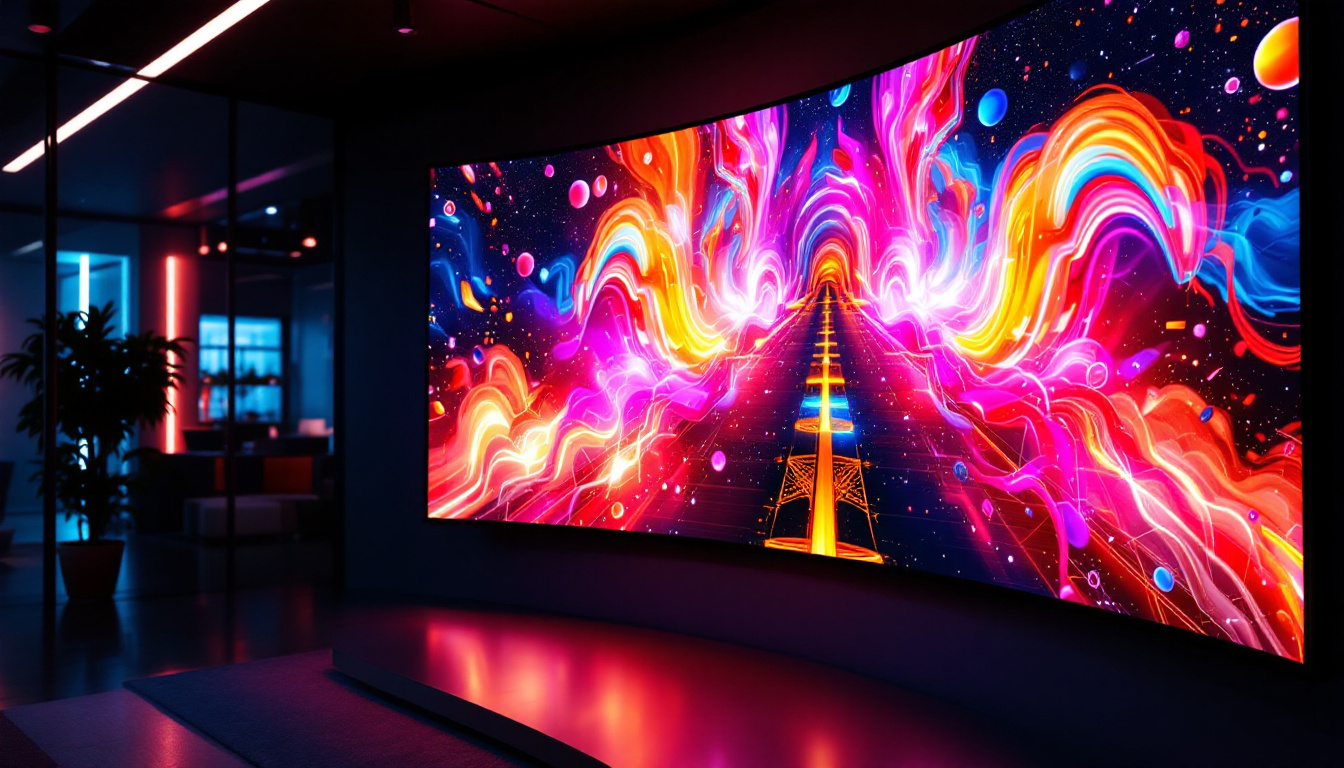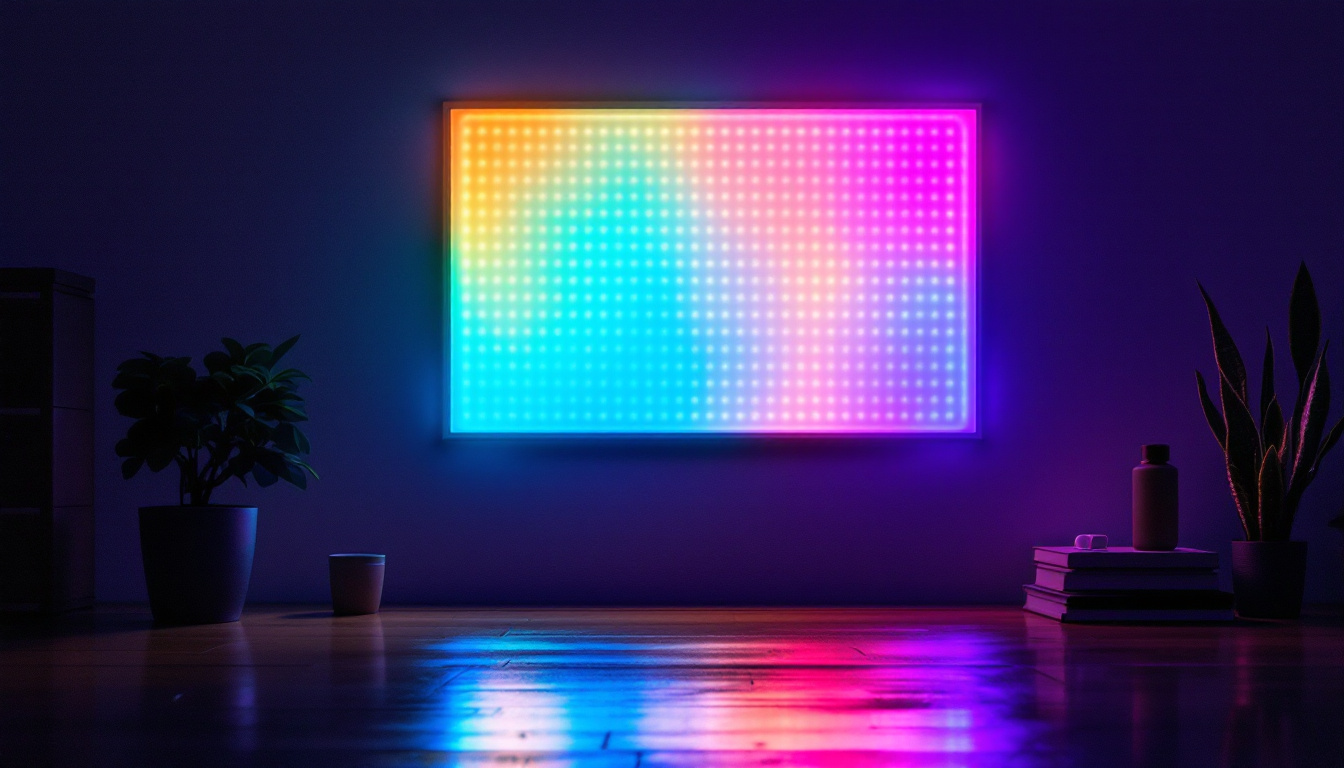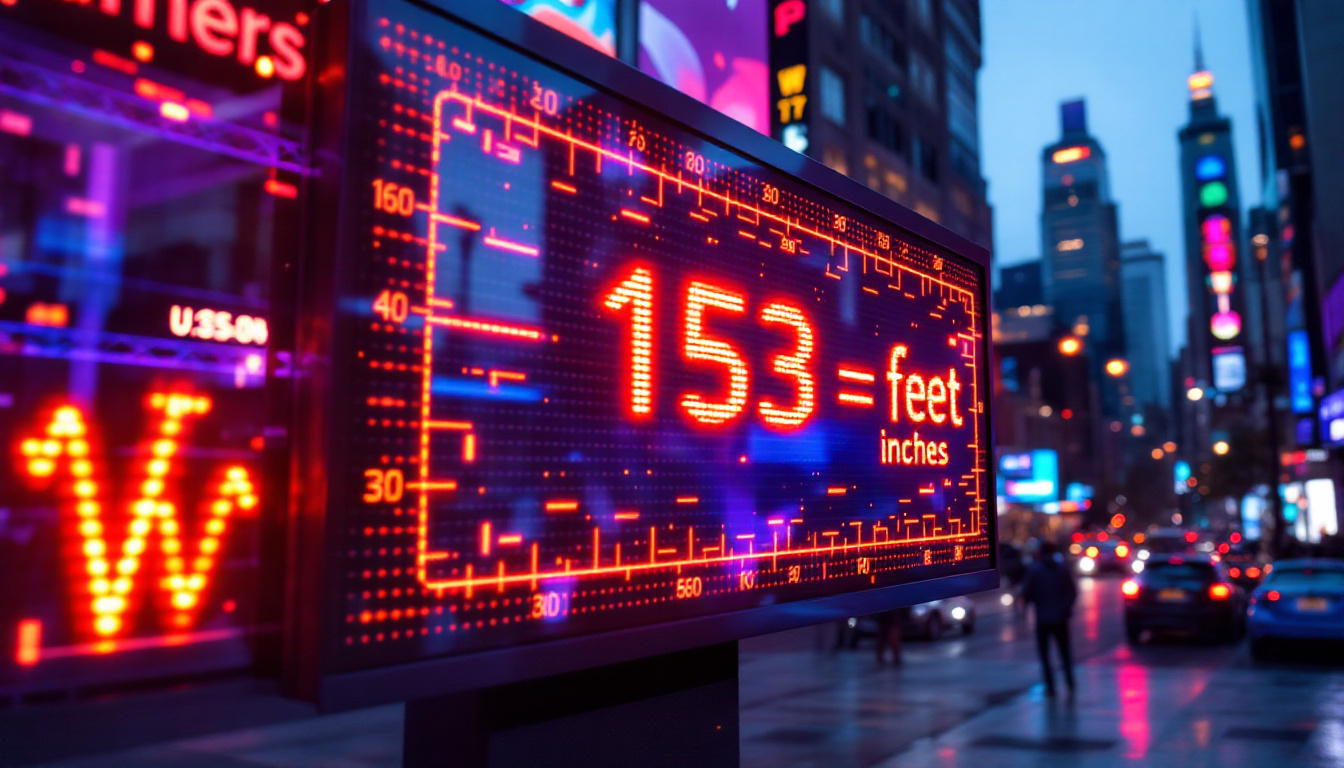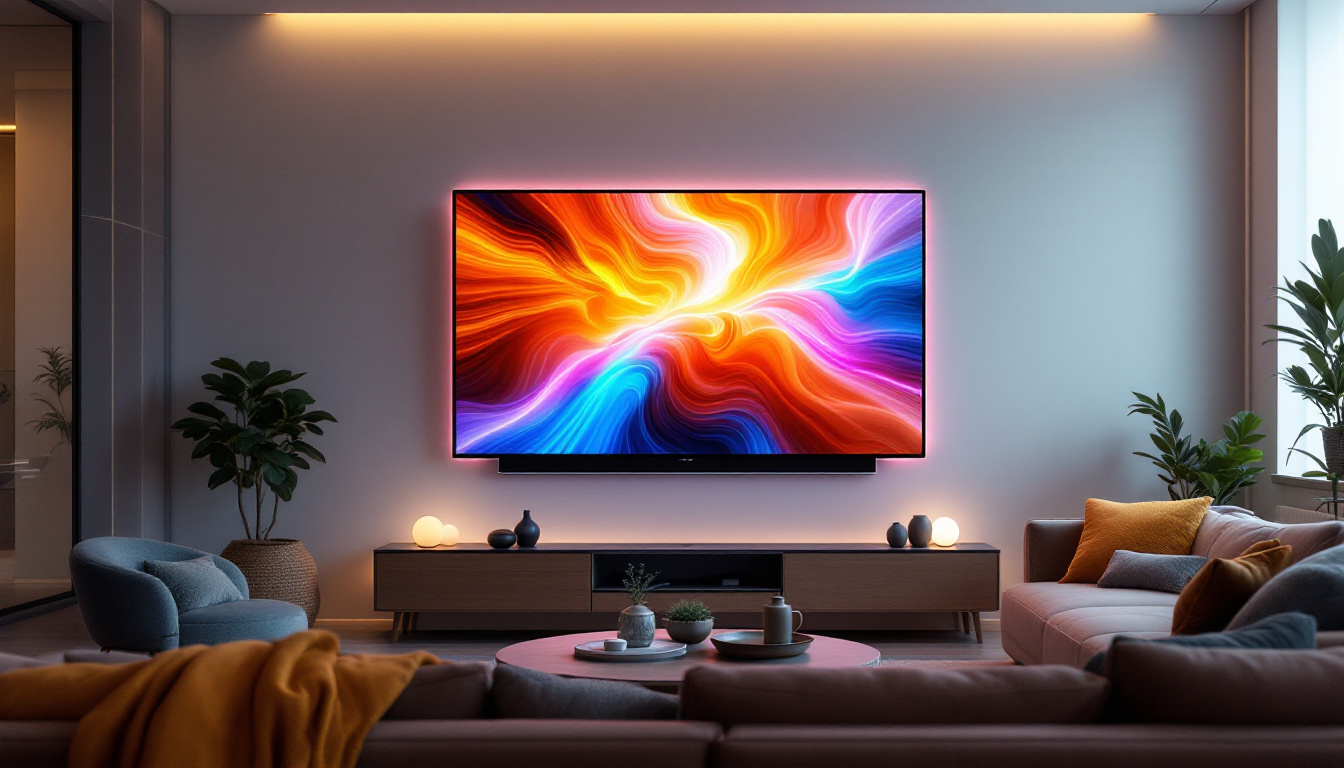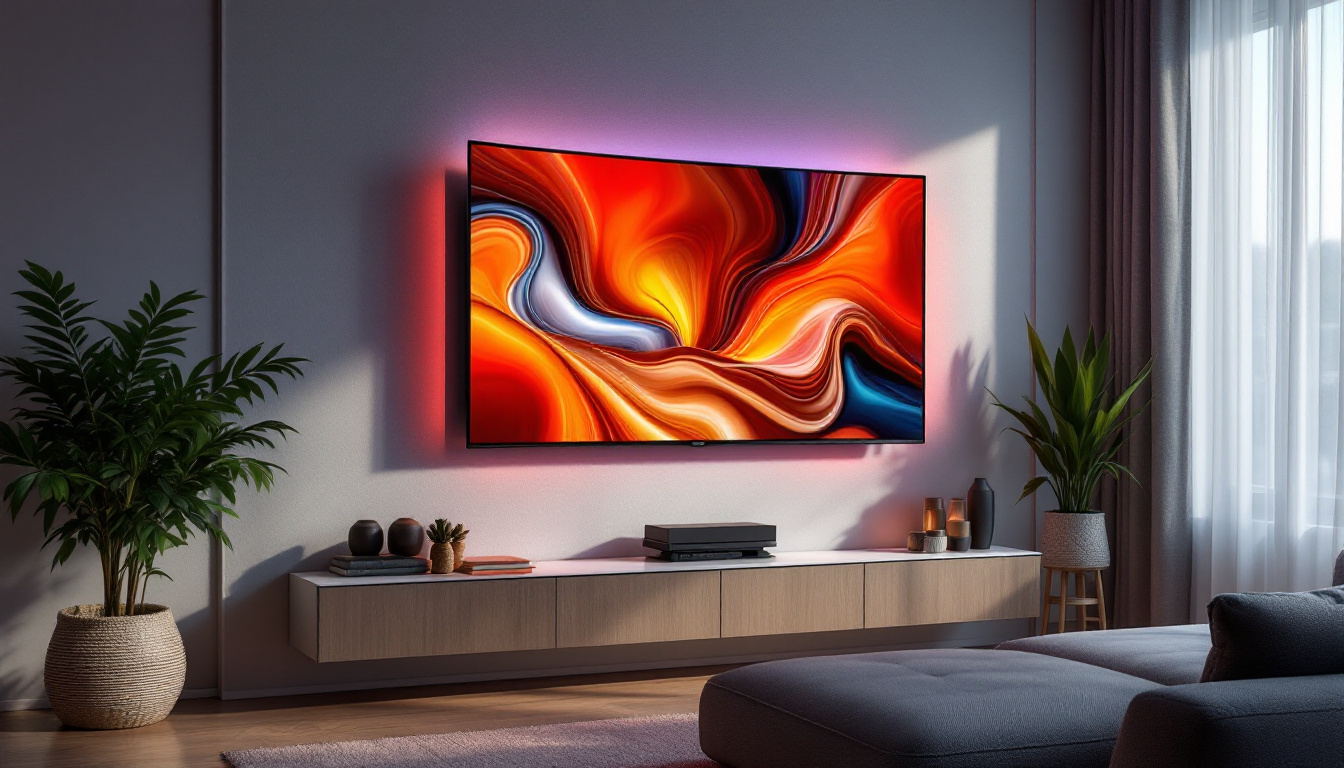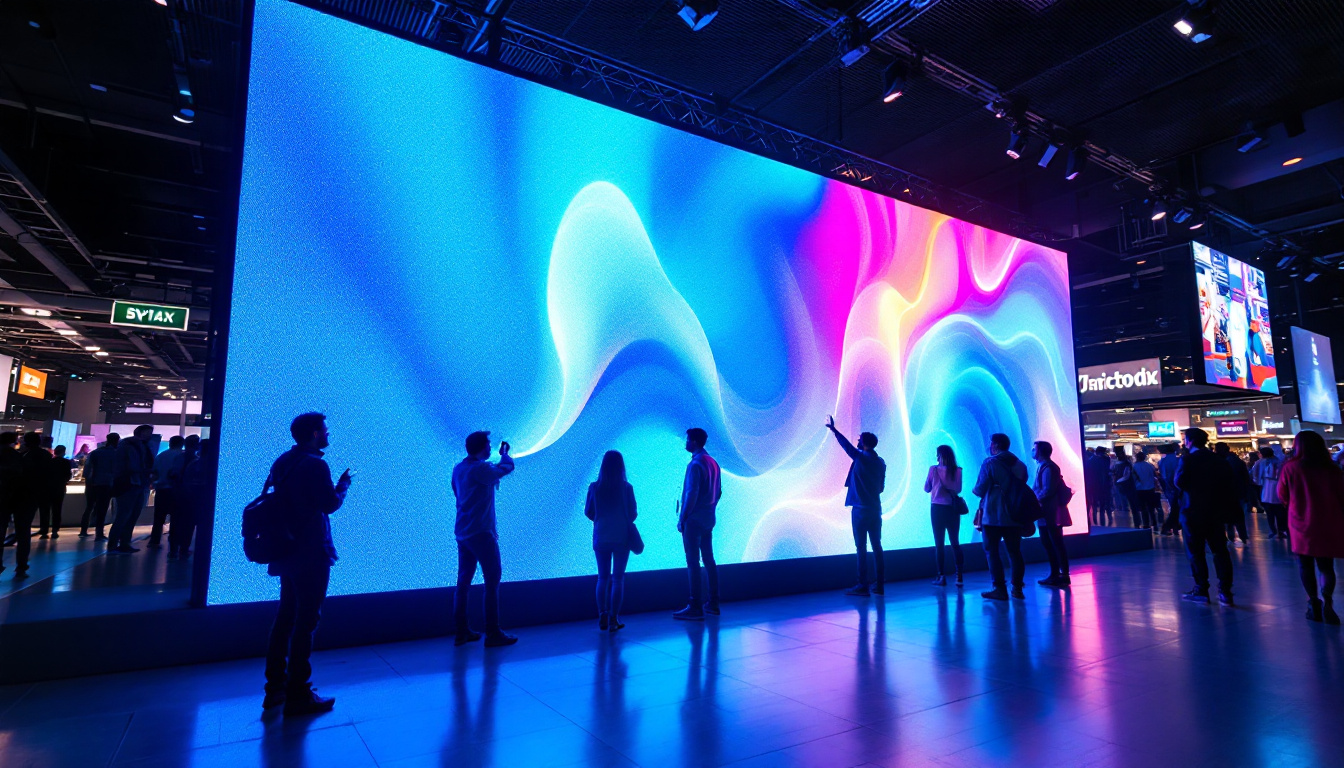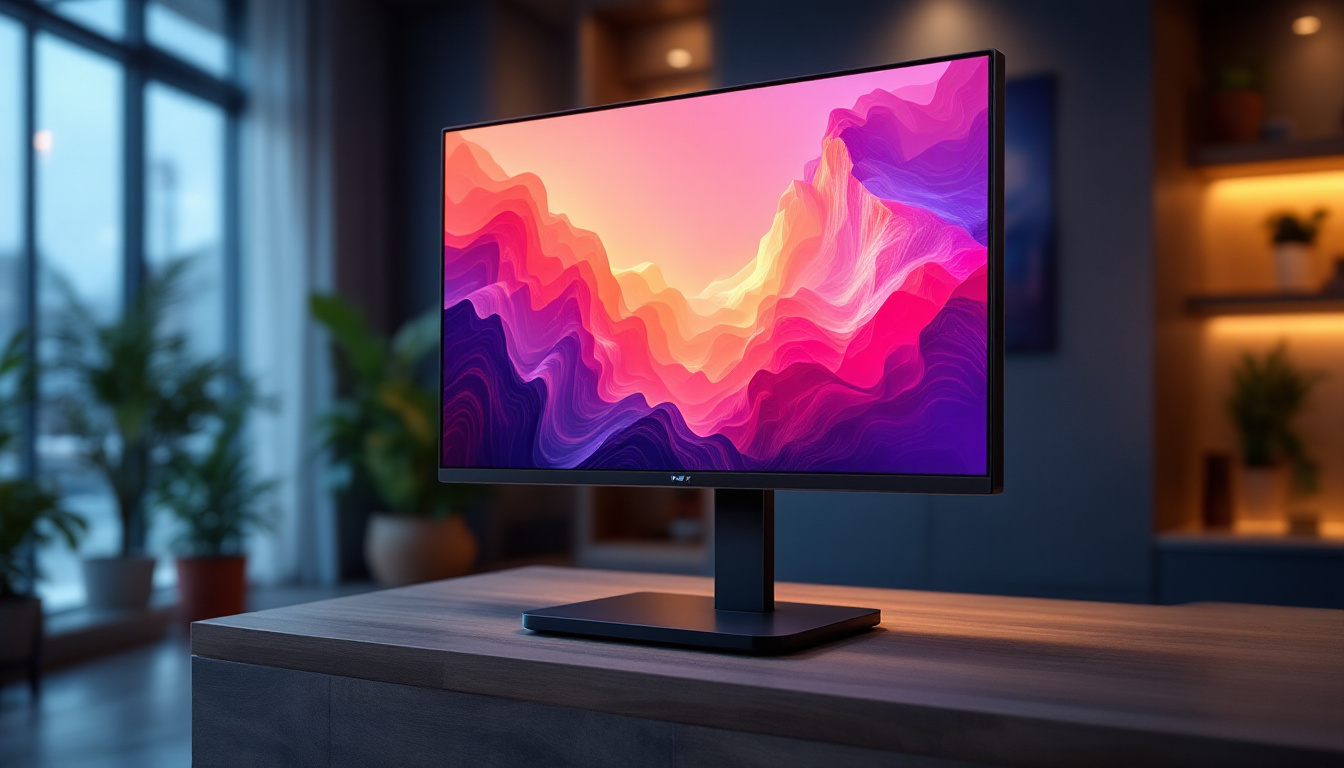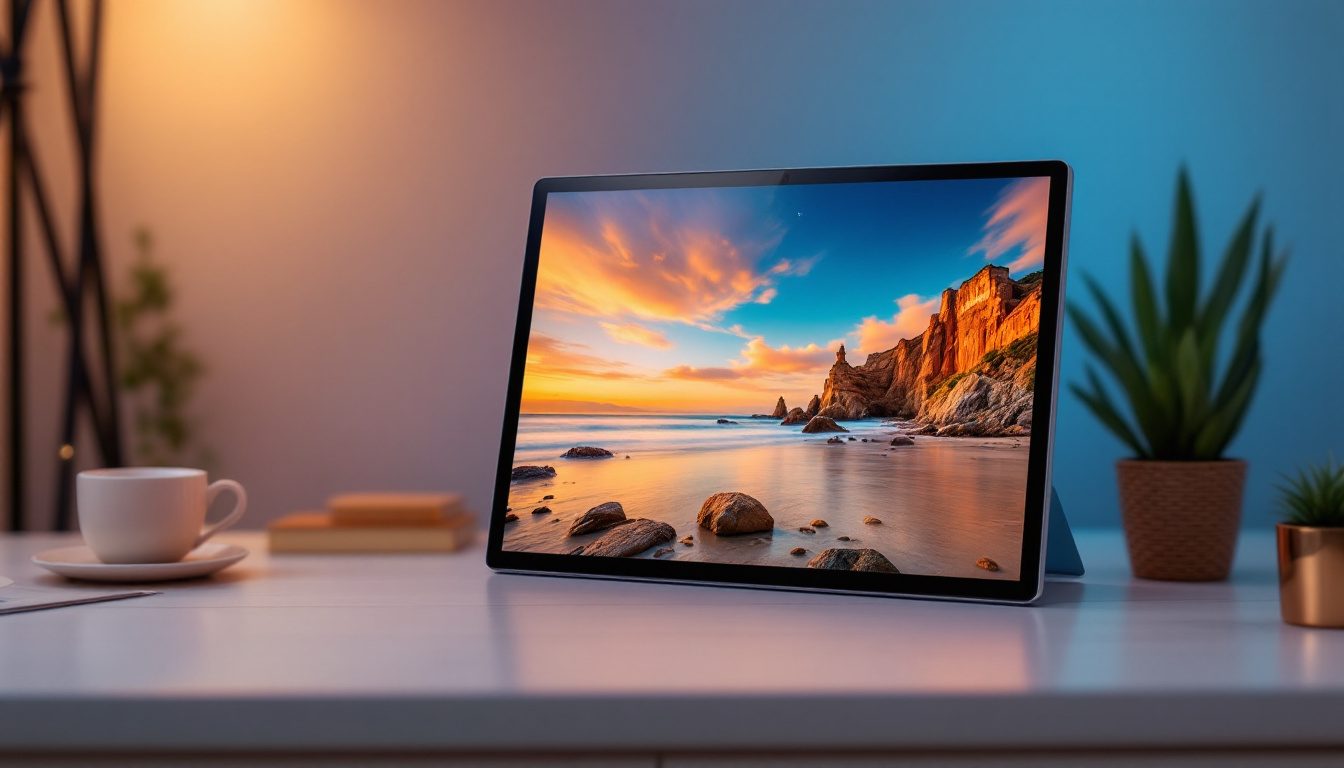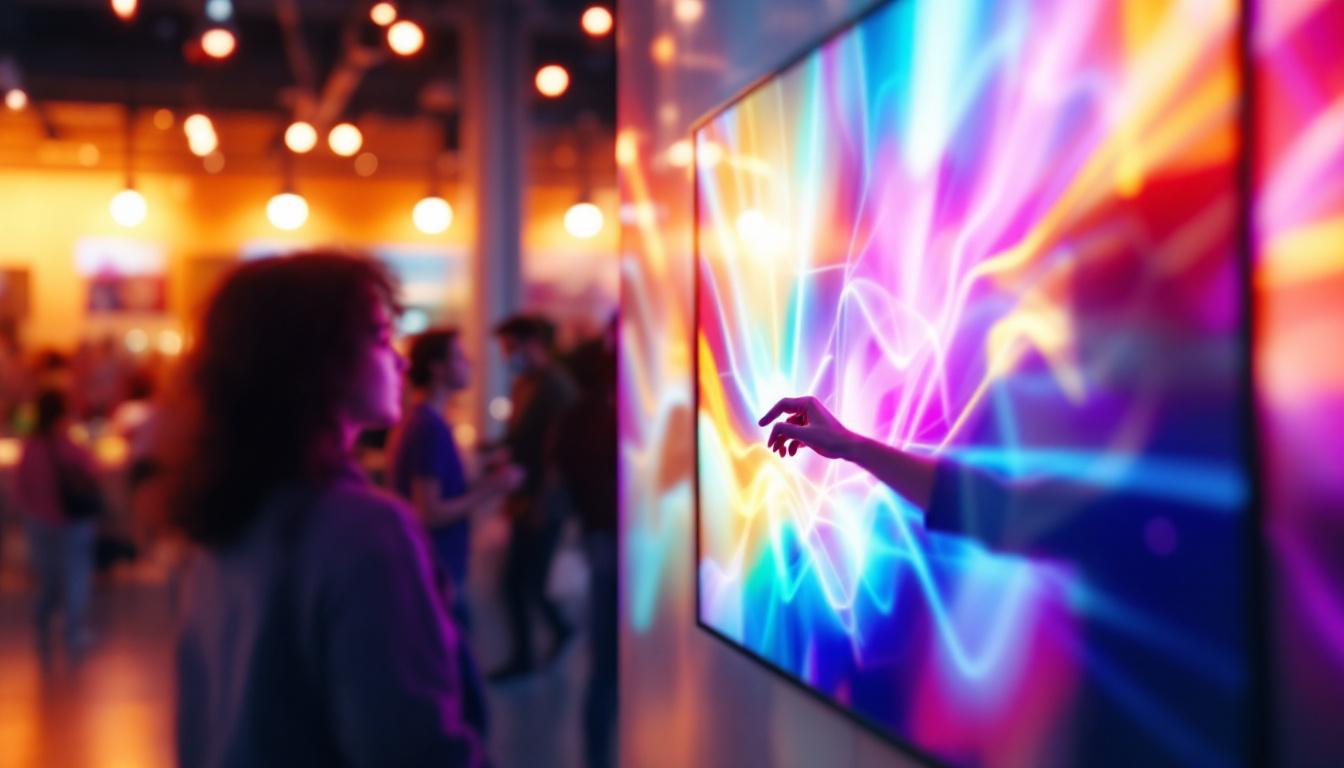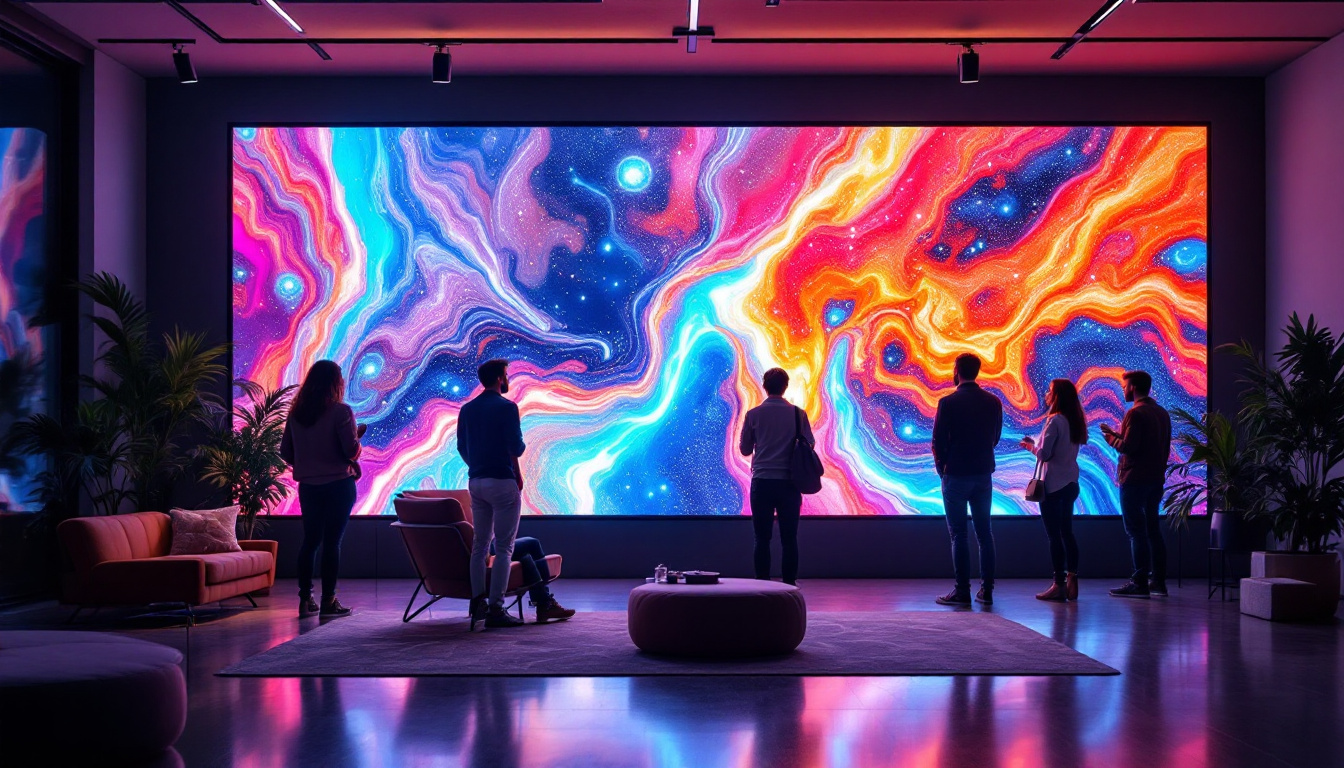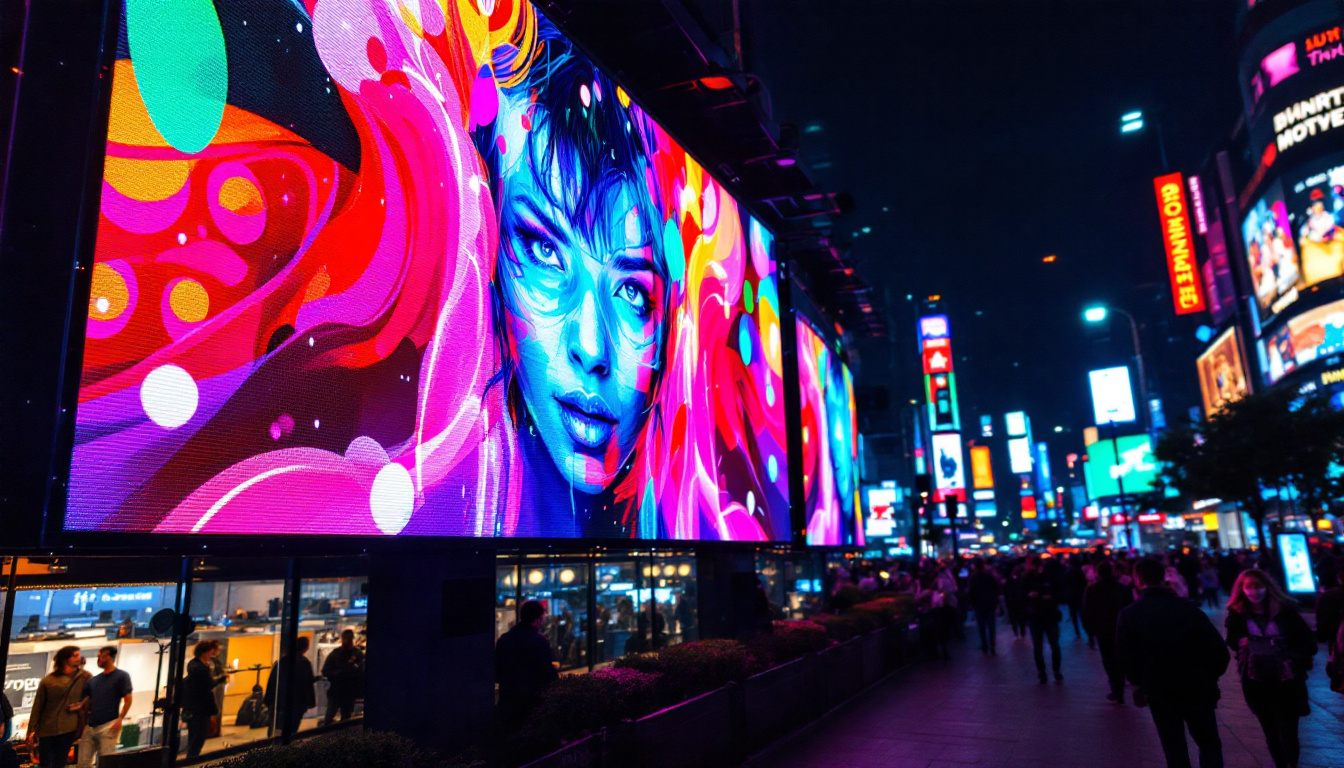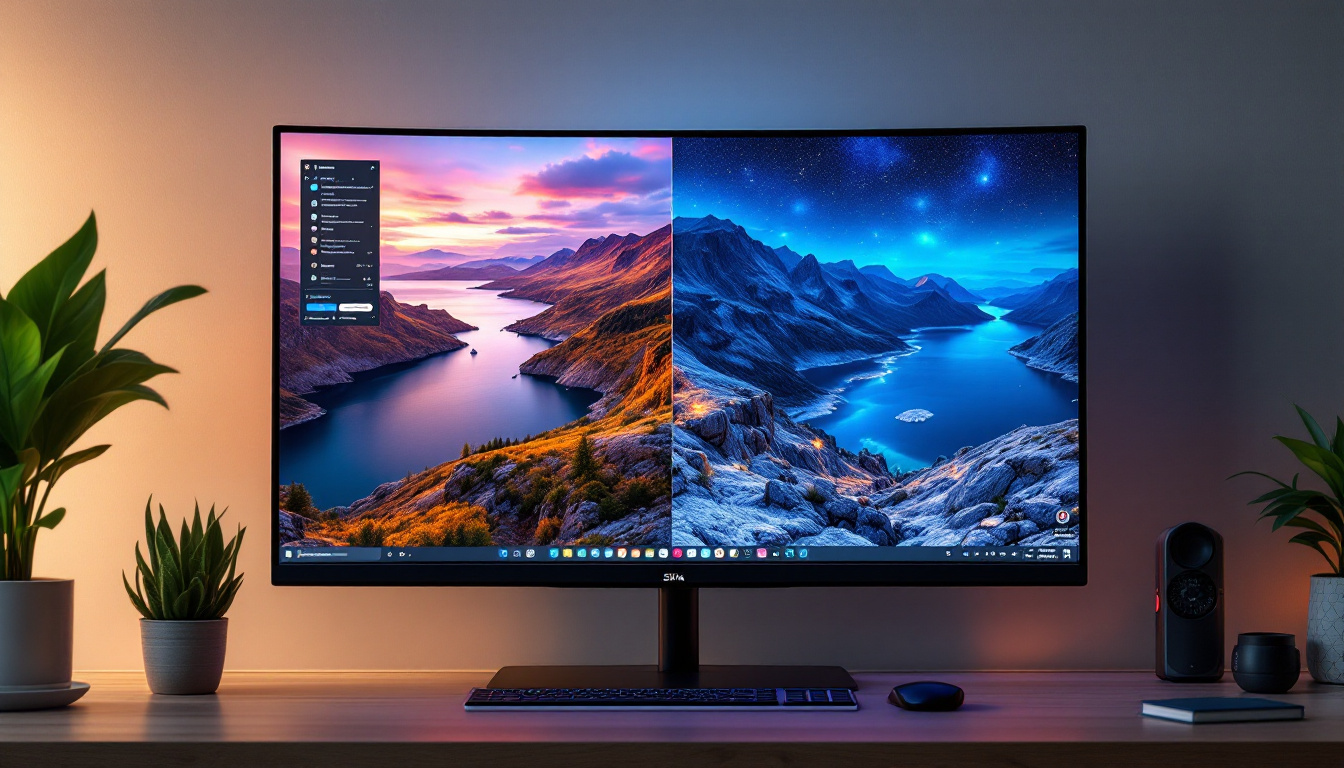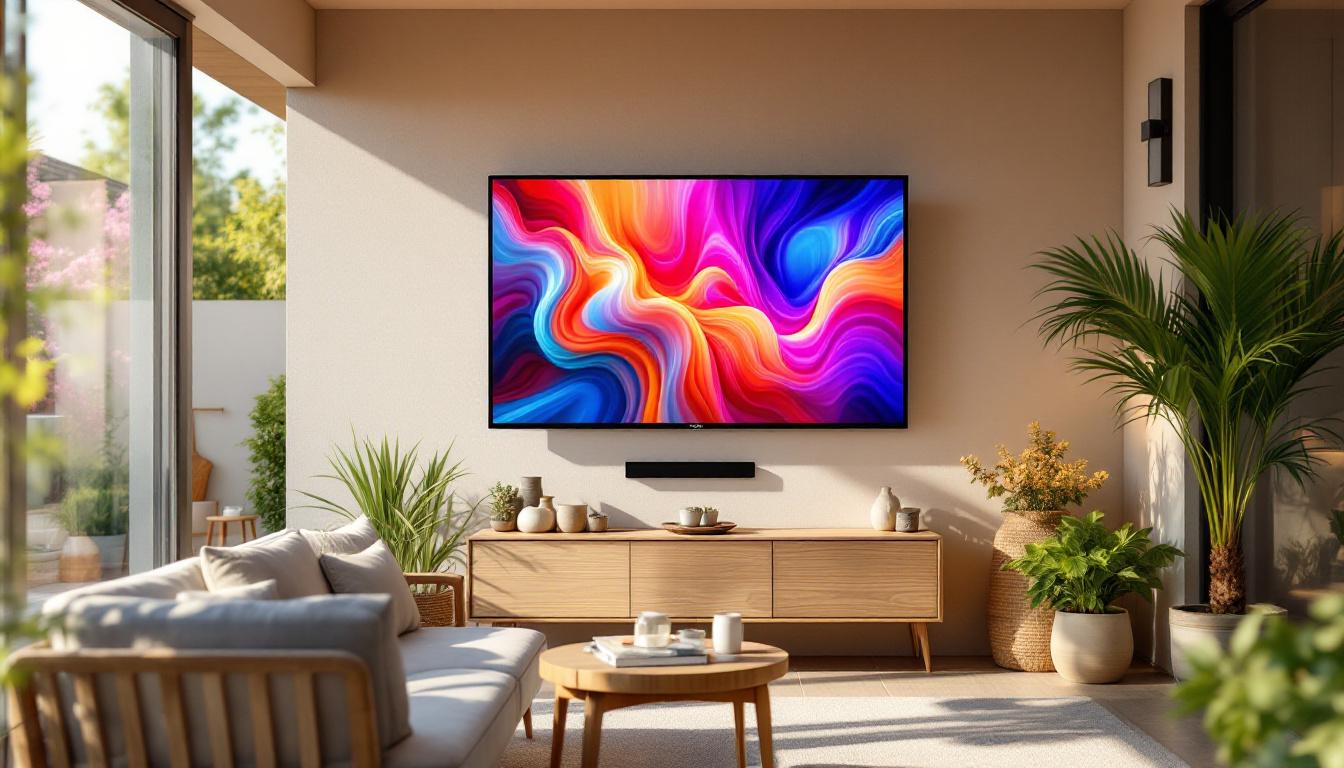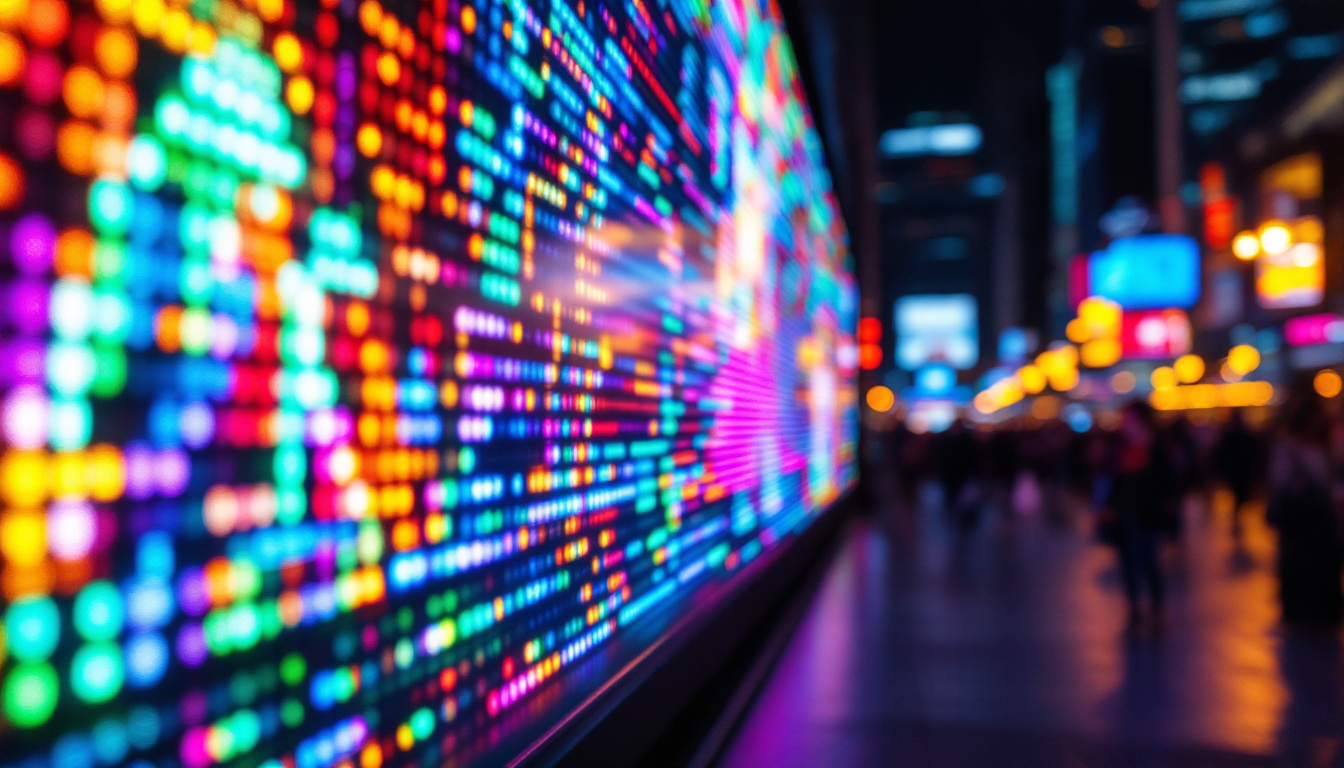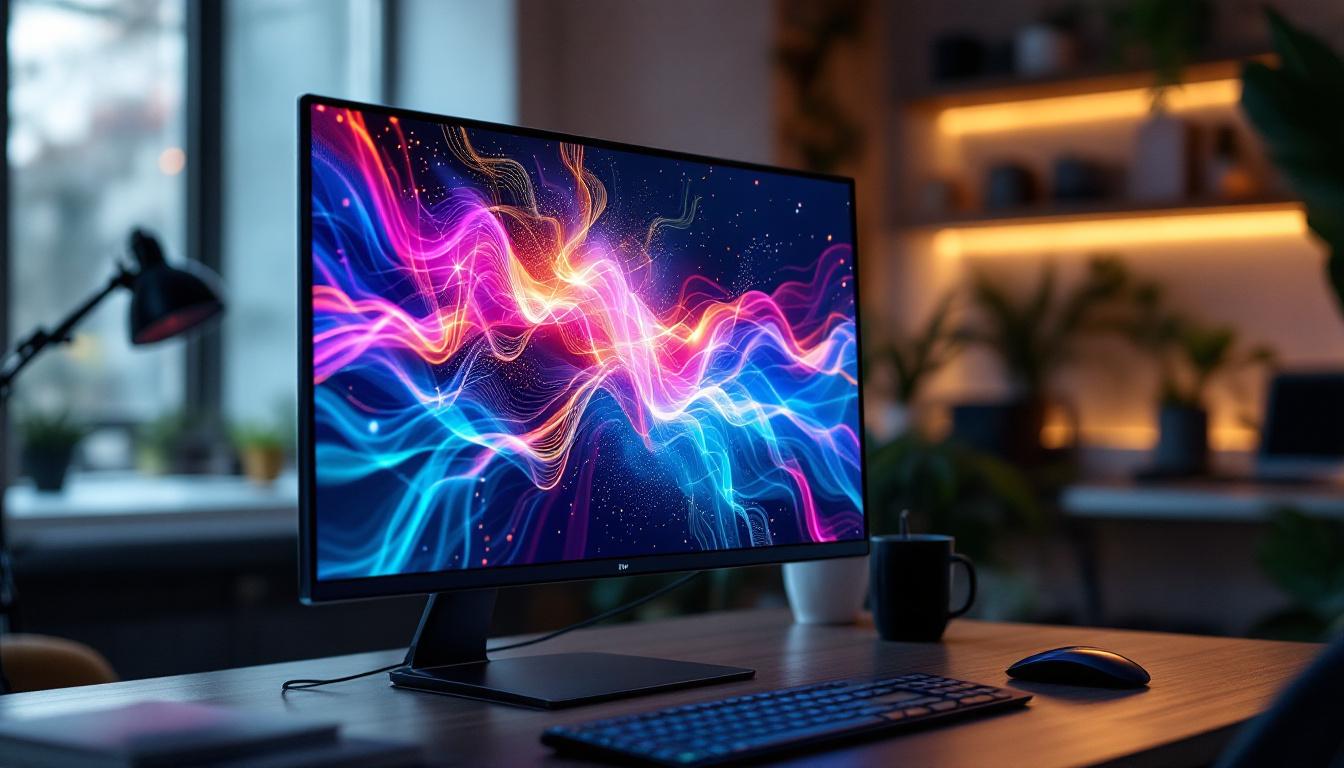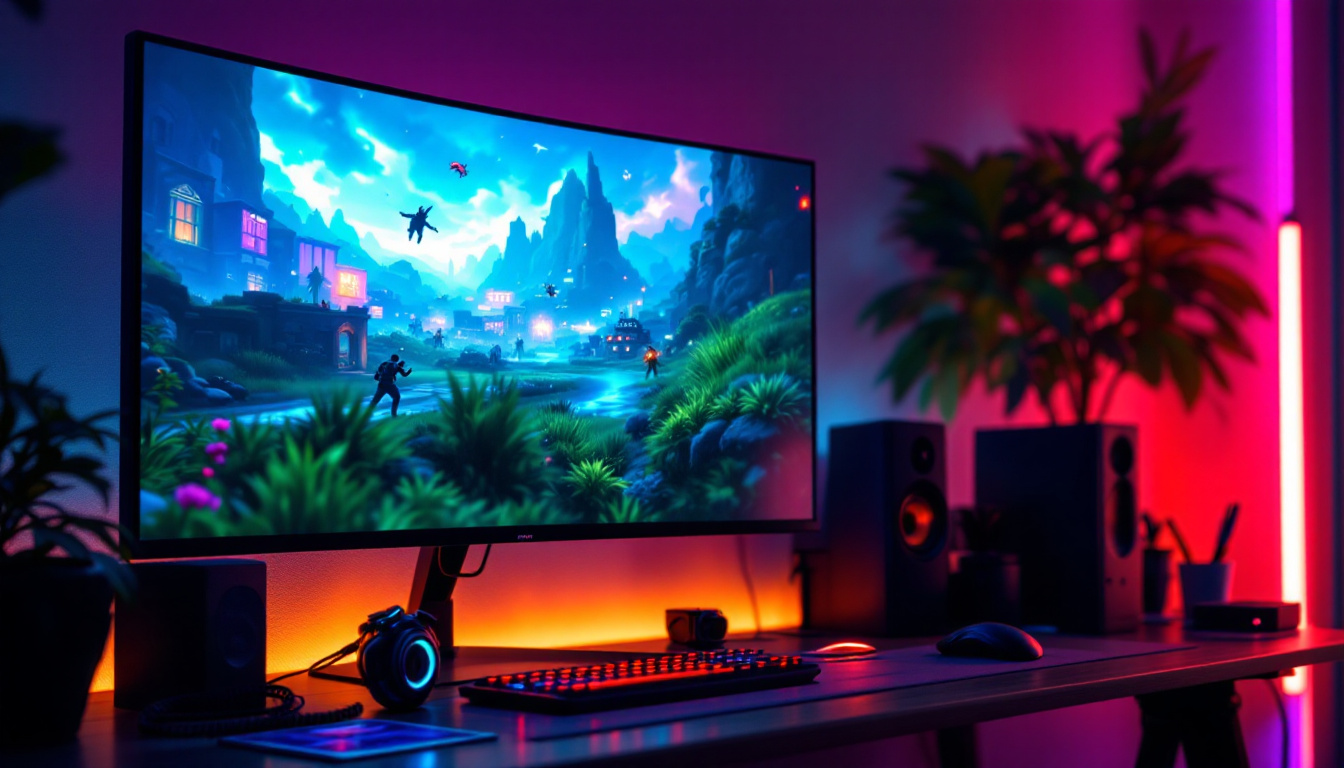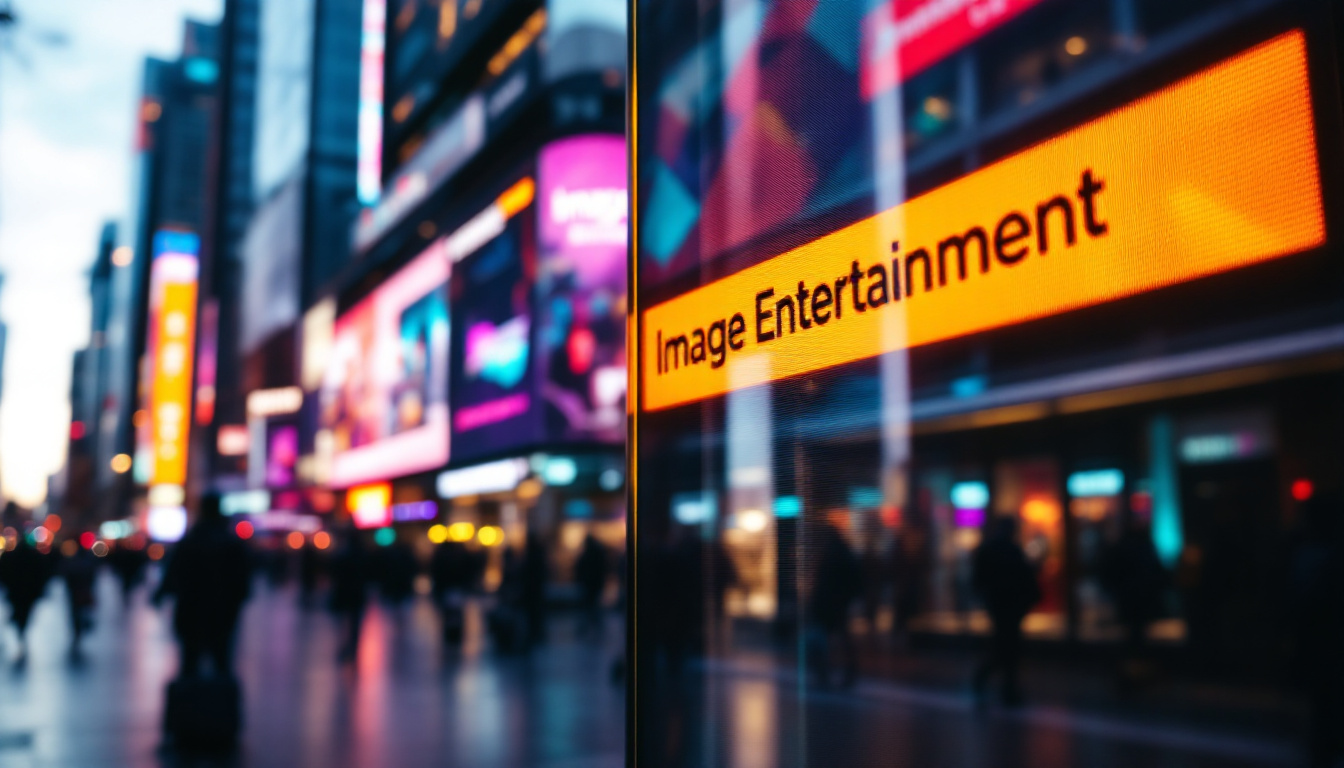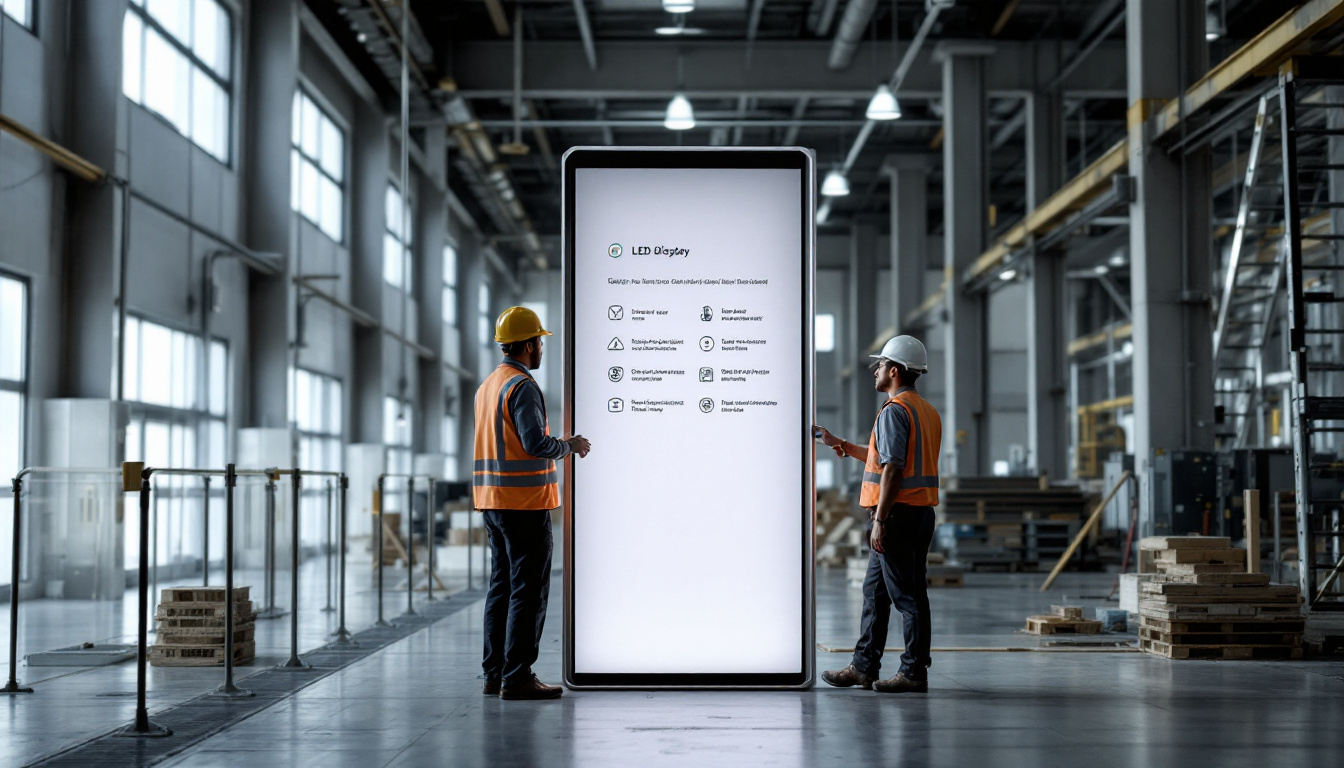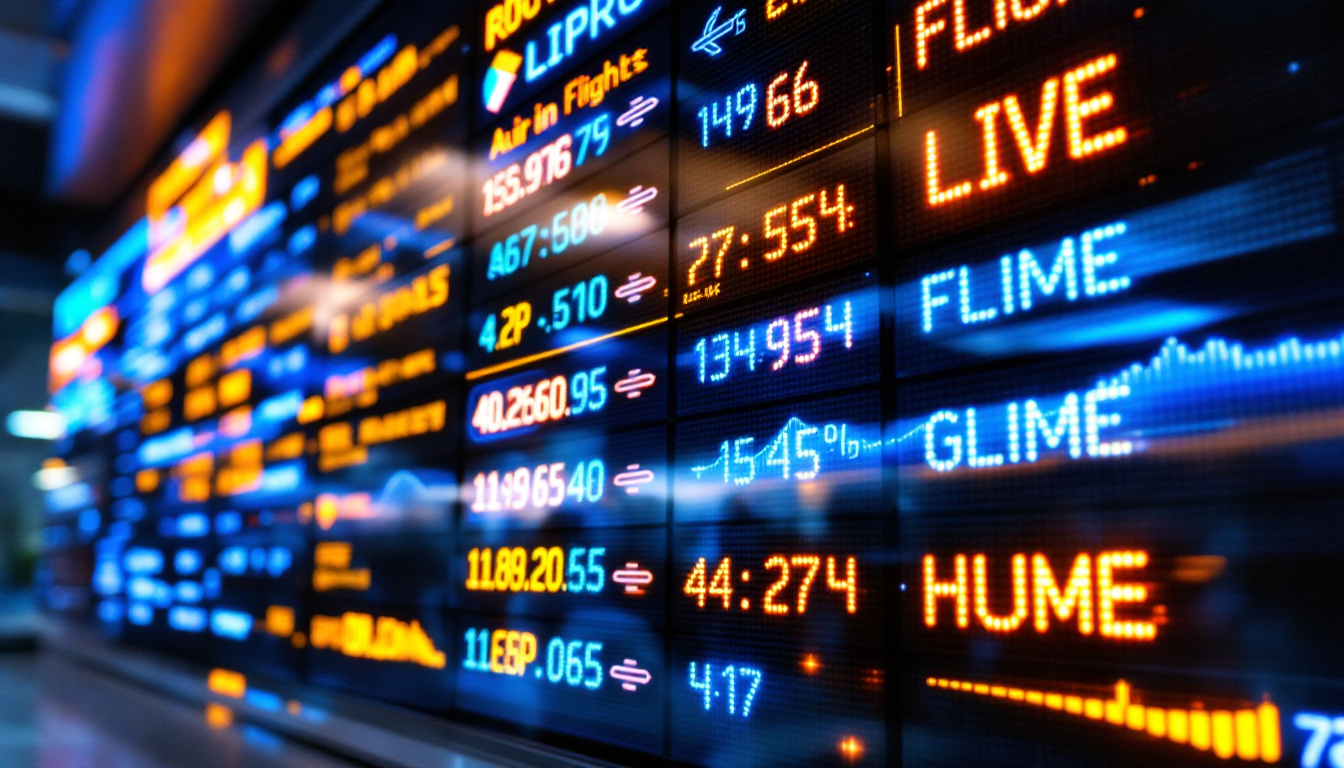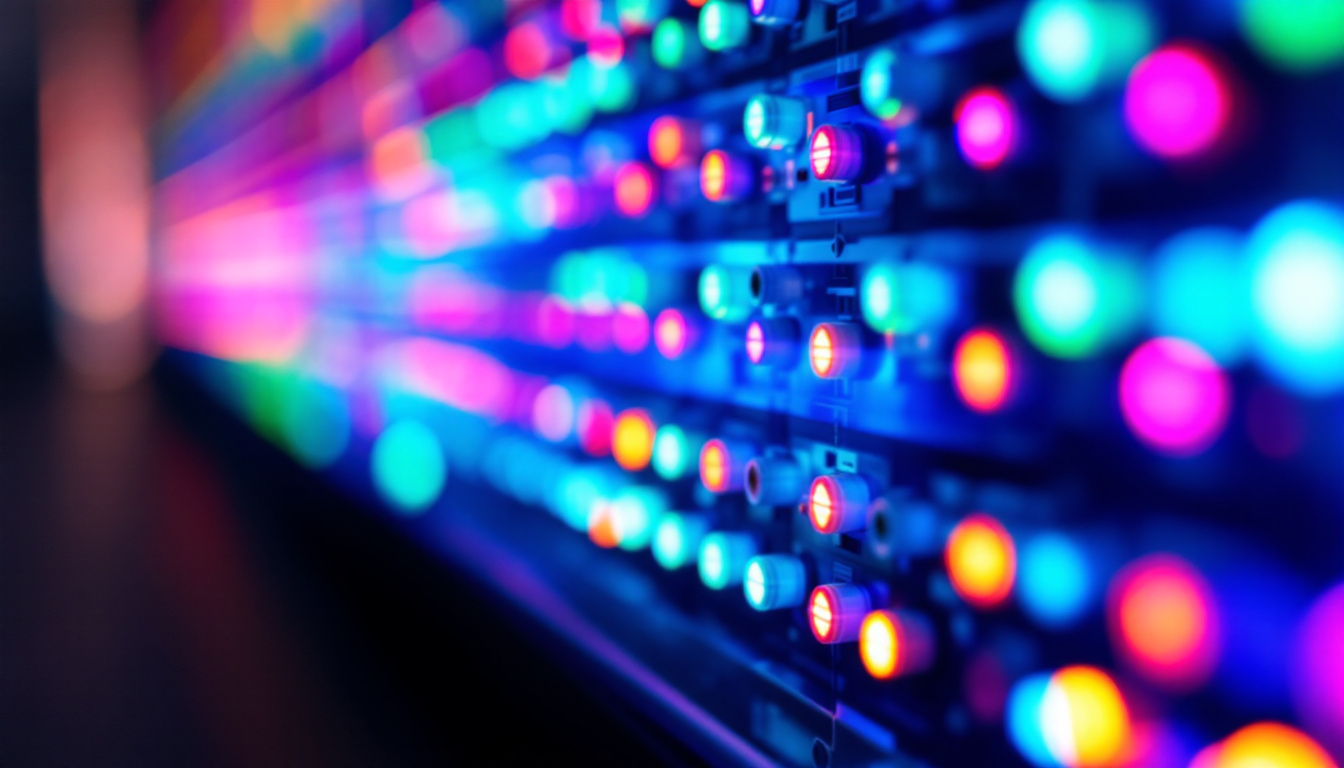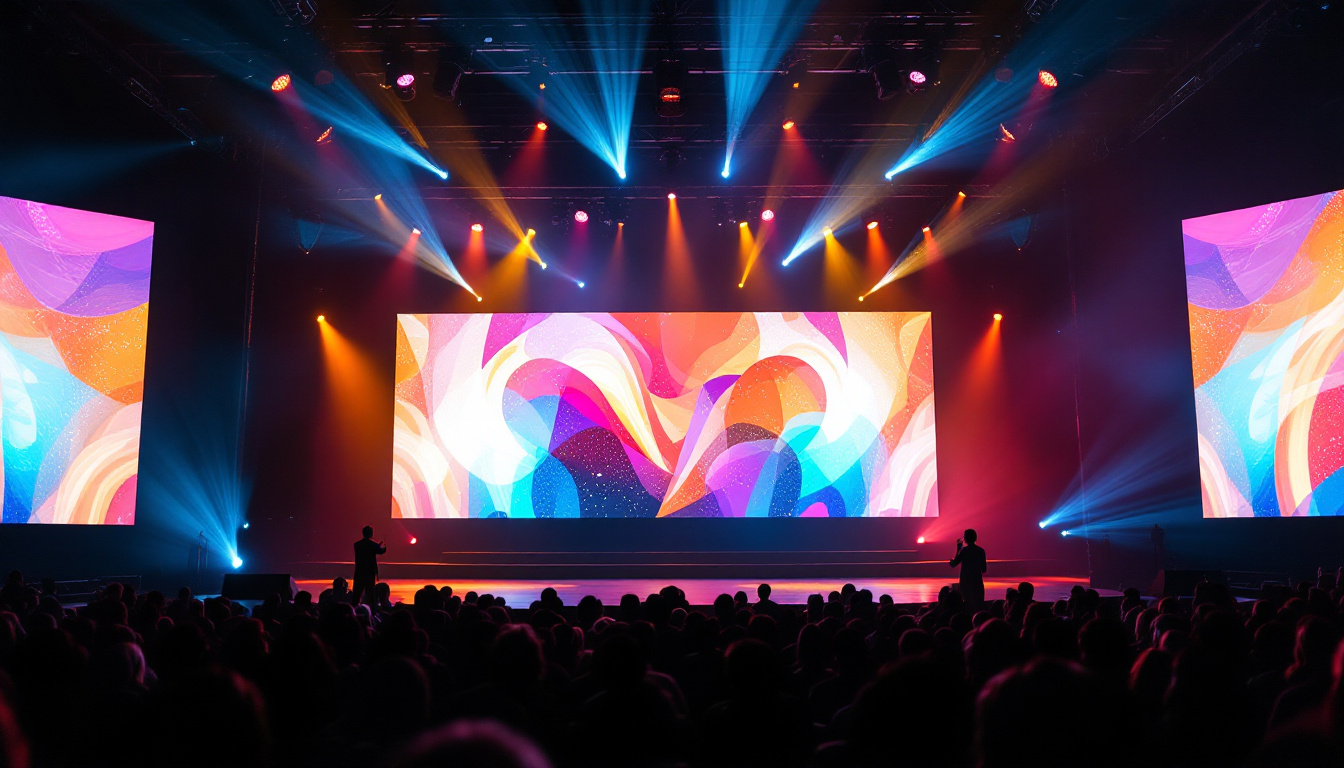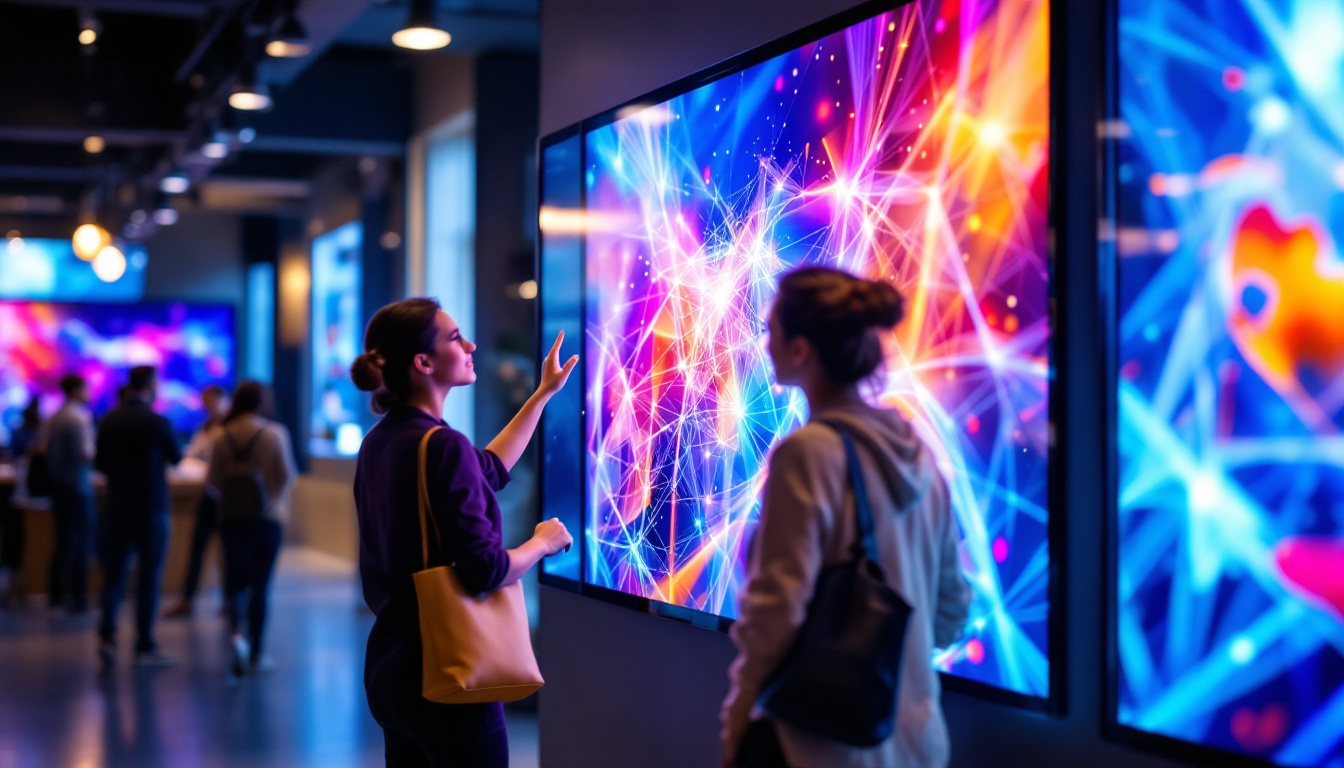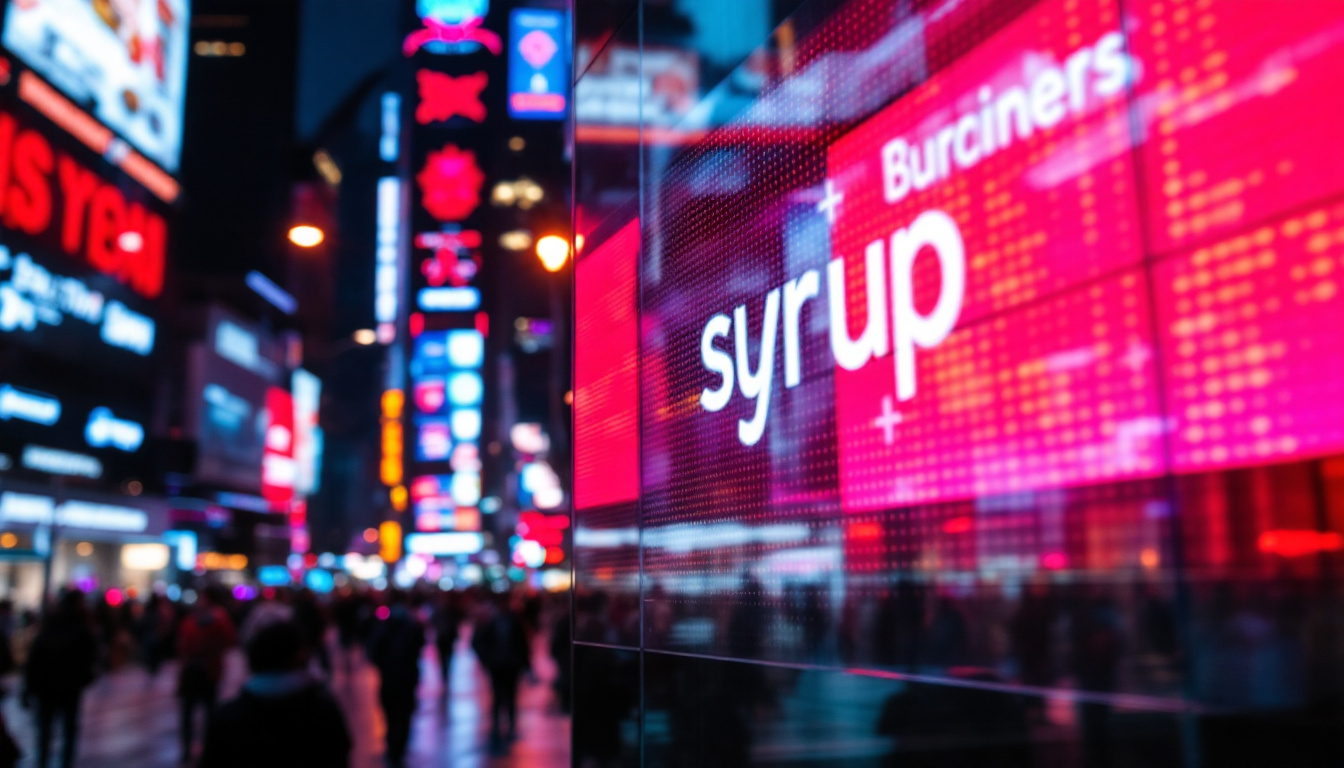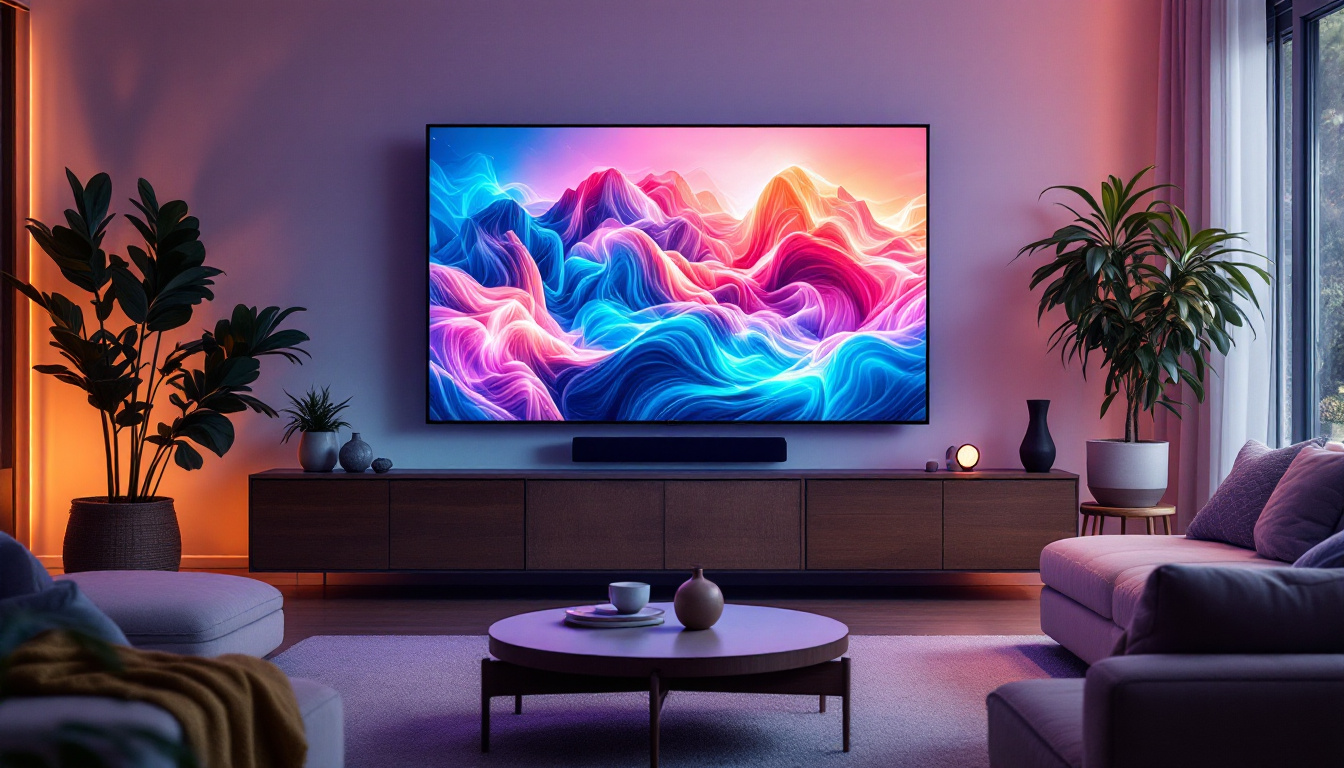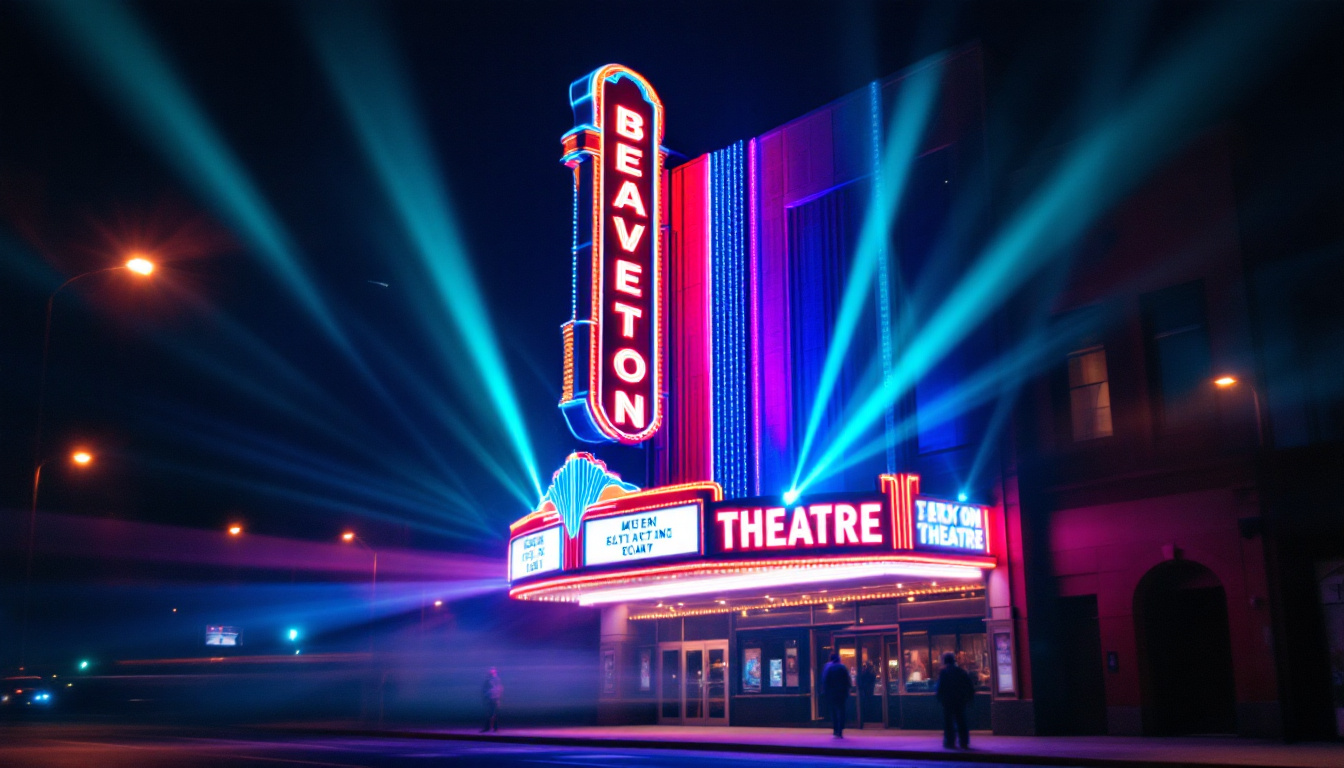Curved LED Display Screen: LED Display Explained
The evolution of display technology has transformed the way information is presented, particularly in commercial and entertainment settings. Among the most innovative advancements is the curved LED display screen. This technology not only enhances visual appeal but also improves viewer engagement. In this article, we will delve into the intricacies of curved LED displays, exploring their features, advantages, and applications.
Understanding LED Display Technology
LED (Light Emitting Diode) displays have become a staple in modern technology, known for their brightness, energy efficiency, and versatility. Unlike traditional LCD screens, which rely on backlighting, LED displays use individual diodes to produce light. This fundamental difference allows for greater contrast ratios and vibrant colors, making LED technology a preferred choice for everything from smartphones to large-scale advertising screens.
How LED Displays Work
At the core of an LED display are thousands of tiny diodes that emit light in various colors. These diodes are arranged in a grid format, forming pixels that combine to create images and videos. When electricity passes through the diodes, they illuminate, producing a wide spectrum of colors. This technology enables displays to achieve high levels of brightness, making them suitable for both indoor and outdoor environments. The ability to adjust brightness dynamically also means that LED displays can maintain clarity in various lighting conditions, from bright sunlight to dimly lit rooms.
Furthermore, LED displays can be classified into two main types: direct view and emissive displays. Direct view displays are commonly used in televisions and monitors, while emissive displays are often found in larger installations, such as billboards and digital signage. The latter type is particularly advantageous for advertising, as the vivid colors and high brightness levels can capture the attention of passersby, even from a distance. Additionally, advancements in technology have led to the development of flexible LED displays, which can be bent or shaped to fit unique spaces, further expanding their applications in creative and architectural designs.
The Role of Curvature in Display Technology
The introduction of curvature in LED displays has revolutionized the viewing experience. Curved screens are designed to wrap around the viewer’s field of vision, creating a more immersive environment. This curvature helps to reduce distortion and enhances depth perception, making images appear more lifelike. The design also minimizes reflections from ambient light sources, which can be a common issue with flat screens, thereby improving overall visibility and comfort during extended viewing sessions.
Moreover, the curved design allows for wider viewing angles. This is particularly beneficial in settings where multiple viewers are present, such as in theaters, conference rooms, or public displays. As a result, more people can enjoy the content without experiencing color fading or image distortion. Additionally, the aesthetic appeal of curved displays has made them popular in high-end consumer electronics, where they not only serve a functional purpose but also enhance the overall design of a space. With ongoing innovations in curvature technology, future displays may offer even more sophisticated designs that cater to the evolving needs of consumers and businesses alike.
Benefits of Curved LED Display Screens
Curved LED display screens offer a multitude of advantages that make them an attractive choice for various applications. From enhanced aesthetics to improved functionality, these displays are increasingly becoming the preferred option for businesses and organizations.
Enhanced Visual Experience
One of the most significant benefits of curved LED displays is the enhanced visual experience they provide. The curvature of the screen creates a sense of depth, drawing viewers into the content. This immersive quality is particularly effective for video presentations, gaming, and cinematic experiences, where engagement is crucial.
Additionally, the curvature helps to minimize glare and reflections, which can be distracting in flat displays. This feature is especially valuable in brightly lit environments, where traditional screens may struggle to maintain image clarity.
Space Optimization
Curved LED displays can also optimize space in a variety of settings. Their unique design allows for more creative installation options, enabling them to fit into areas where traditional flat screens may not be feasible. This flexibility makes them ideal for retail environments, trade shows, and event spaces.
Furthermore, the ability to create large, seamless displays by connecting multiple curved screens enhances the overall visual impact. This is particularly useful for advertising and branding, as it allows companies to present their messages in a captivating manner.
Energy Efficiency and Longevity
Another compelling advantage of LED technology is its energy efficiency. Curved LED displays consume less power compared to traditional display technologies, making them a more sustainable choice. This efficiency not only reduces operational costs but also contributes to a lower carbon footprint.
In addition to energy savings, LED displays are known for their longevity. With a lifespan that can exceed 100,000 hours, these displays require less frequent replacements, further enhancing their cost-effectiveness over time.
Applications of Curved LED Display Screens
The versatility of curved LED display screens allows them to be utilized in a wide range of applications. From entertainment venues to corporate environments, these displays are making their mark in various industries.
Entertainment and Media
In the entertainment industry, curved LED displays are increasingly used in cinemas, theaters, and concert venues. Their immersive quality enhances the viewer’s experience, making films and live performances more engaging. The ability to create large, dynamic displays allows for stunning visual effects that captivate audiences.
Moreover, in sports arenas, curved LED screens are used to display live feeds, replays, and advertisements. Their curved design ensures that fans seated at different angles can enjoy a clear view of the action, enhancing the overall atmosphere of the event.
Retail and Advertising
In retail environments, curved LED displays are becoming a popular choice for digital signage. Their eye-catching design attracts customers and effectively communicates promotional messages. Retailers can use these displays to showcase products, highlight sales, and create immersive brand experiences.
Additionally, curved displays can be used in shopping malls and public spaces to provide information and directions. Their unique shape allows for creative installations that engage passersby, making them an effective tool for advertising and information dissemination.
Corporate and Educational Settings
In corporate environments, curved LED displays are utilized for presentations, video conferencing, and collaborative workspaces. Their ability to provide a wide viewing angle ensures that all participants can see the content clearly, fostering better communication and collaboration.
In educational settings, these displays can enhance learning experiences by presenting information in an engaging manner. Curved screens can be used in classrooms, auditoriums, and training facilities to create interactive learning environments that capture students’ attention.
Challenges and Considerations
While curved LED displays offer numerous benefits, there are also challenges and considerations to keep in mind. Understanding these factors can help organizations make informed decisions when investing in this technology.
Cost Implications
One of the primary challenges associated with curved LED displays is their cost. Generally, these displays are more expensive than traditional flat screens, which can be a significant consideration for businesses with budget constraints. However, the long-term benefits, such as energy savings and reduced maintenance costs, may offset the initial investment.
Organizations should conduct a thorough cost-benefit analysis to determine whether the advantages of curved displays justify the expense. In many cases, the enhanced engagement and visual impact can lead to increased revenue, making the investment worthwhile.
Installation and Maintenance
Installing curved LED displays can also pose challenges. The unique shape requires specialized mounting solutions and installation techniques, which may necessitate hiring experienced professionals. Additionally, maintenance can be more complex compared to flat displays, particularly if the screens are part of a larger, interconnected system.
Regular maintenance is essential to ensure optimal performance and longevity. Organizations should establish a maintenance schedule and consider training staff to handle minor issues to minimize downtime and repair costs.
The Future of Curved LED Displays
The future of curved LED display technology is promising, with ongoing advancements expected to enhance their capabilities further. As technology continues to evolve, several trends are emerging that may shape the future of curved displays.
Advancements in Display Technology
Research and development in display technology are likely to lead to even more innovative curved LED displays. Improvements in resolution, color accuracy, and refresh rates will enhance the visual experience, making these displays even more appealing for various applications.
Additionally, the integration of artificial intelligence and machine learning may enable more personalized and adaptive content delivery, further enhancing viewer engagement. This could revolutionize how businesses use curved displays for advertising and information dissemination.
Increased Adoption Across Industries
As the benefits of curved LED displays become more widely recognized, their adoption across various industries is expected to increase. From healthcare to transportation, organizations are likely to explore the potential of curved displays to enhance communication, information sharing, and customer engagement.
Moreover, as costs continue to decrease with advancements in manufacturing processes, smaller businesses may also find curved LED displays to be a viable option for their needs.
Conclusion
Curved LED display screens represent a significant advancement in display technology, offering numerous benefits that enhance visual experiences across various applications. Their ability to create immersive environments, optimize space, and provide energy efficiency makes them an attractive choice for businesses and organizations.
While there are challenges associated with cost and installation, the long-term advantages often outweigh these considerations. As technology continues to evolve, the future of curved LED displays looks bright, promising even more innovative solutions for engaging audiences and enhancing communication.
In a world where visual impact is paramount, curved LED displays are poised to play a crucial role in shaping how information is presented and experienced. As industries continue to embrace this technology, the possibilities for creativity and engagement are limitless.
Discover the Future of LED Displays with LumenMatrix
Ready to elevate your visual experience with the latest in curved LED display technology? LumenMatrix is at the forefront of innovation, offering a diverse range of LED display solutions tailored to your needs. From immersive indoor walls to dynamic outdoor advertising, our products are designed to captivate and engage. Embrace the future of visual communication and check out LumenMatrix LED Display Solutions today, where clarity and impact meet to transform your space.

